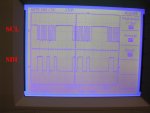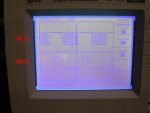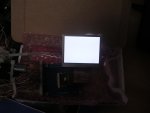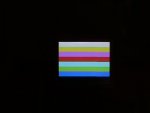Hi all,
We bought this display to include it in one of our products. After many days of banging my head against the walls trying to make it work, all I can get is a white screen. First, I started with 8-bit 8080 configuration with no luck. So now, I'm trying a 4-wire SPI interface, but still no luck at all. The wiring was done according to a table recommended by CF_Tech in one of his recent posts. I am using a PIC18F4550 at 48MHz.
I used an oscilloscope to check that all my PIC ports are working properly. Attached is part of the program that I'm using. It is writen in PicBasic Pro, but if you know C it should be very easy to follow.
At this point I am completely clueless, so any help will be greatly appreciated.
Sincerely,
Robert
We bought this display to include it in one of our products. After many days of banging my head against the walls trying to make it work, all I can get is a white screen. First, I started with 8-bit 8080 configuration with no luck. So now, I'm trying a 4-wire SPI interface, but still no luck at all. The wiring was done according to a table recommended by CF_Tech in one of his recent posts. I am using a PIC18F4550 at 48MHz.
I used an oscilloscope to check that all my PIC ports are working properly. Attached is part of the program that I'm using. It is writen in PicBasic Pro, but if you know C it should be very easy to follow.
At this point I am completely clueless, so any help will be greatly appreciated.
Sincerely,
Robert
Looking for additional LCD resources? Check out our LCD blog for the latest developments in LCD technology.






